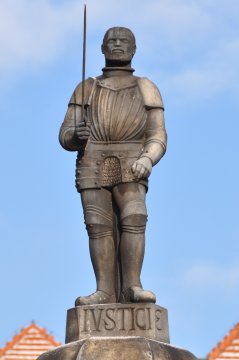
The city lies on the Warta river. It is the capital of Wielkopolska Voivodeship and the see of the Archdiocese of Poznań. An important point on the Piast Trail.
The Town Hall was the seat of the municipal authorities and the court. Those accused of wrongdoing were interrogated in the basement although sentences was executed outside. The penalty of death by hanging was executed outside the city walls. Lighter sentences, known as honour penalties, were carried out at the pillory, in the immediate vicinity of the Town Hall. The first pillory was made of wood but this was replace with a stone one in 1535. Its construction was financed in a somewhat unconventional manner.
A directive that precisely stipulated the apparel befitting a female servant was issued in the first half of the 16th century. Serving wenches who refused to comply with the foregoing dictate and continued to dress too stylishly could count on being hit with a financial penalty. When that proved ineffective, they were banished from the city after their third reprimand. Enough money for a stone pillory was raised after three years. A figure of an executioner was placed on top. The damaged statue was replaced with another by renowned sculptor Marcin Rożek in 1925. The old, historical statue found its way to the Museum of the History of Poznań after it was renovated.




